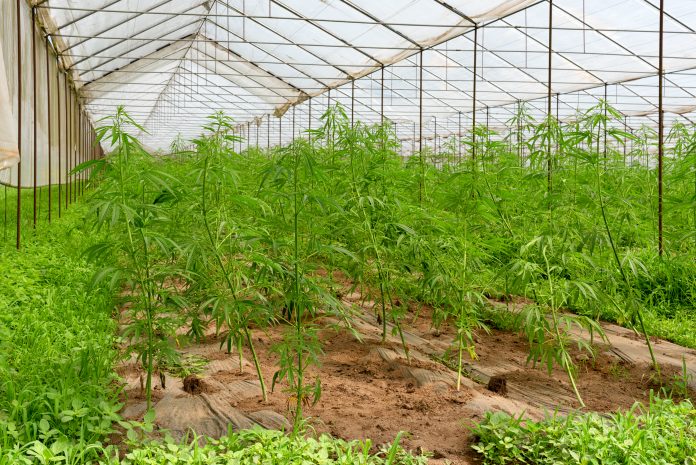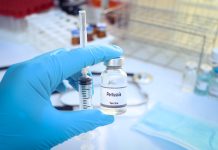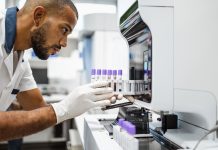Here, Christoph Schubert, CEO of COMPLED Solutions GmbH, discusses how light is one of the most important factors in the professional cultivation of medical cannabis
For many decades, few solutions were available. One method involved the use of both metal halides (MH) and fluorescent lamp technology for the propagation and the vegetative phase combined with high-pressure sodium (HPS) for the flowering phase. Another method that has become widespread in recent years is the use of ceramic metal halide (CMH), as this technology provides for sun-like lighting.
Since the middle of 2018, LED technology has been increasingly gaining a foothold in the professional cultivation of medical cannabis. The reason for this lies not only in the significant efficiency increases thereby achieved but also a considerable easing of the price-performance ratio.
The problem with the ongoing debate on the subject of professional plant lighting, however, is that it is currently almost exclusively limited to the topic of energy efficiency. In the following chapters, we attempt to put this debate on a firmer footing.
Total cost of ownership calculations are too short-sighted
In order to be able to compare different technological approaches with each other, a sensible first step is to calculate the total cost of ownership (TCO) for these different approaches. For this purpose, not only the procurement and operating costs but also the installation and maintenance costs should be included in the calculation. The total costs are then normally calculated for a practice-oriented life cycle. In addition, the TCO should be normalised to a defined light output in order to establish comparability.
Current TCO calculations show that modern LED technology can already beat conventional technologies (HPS and CMH) in relation to the costs. On average, a LED technology break-even on a cost basis is already possible after 3 or 4 years! The problem with plant lighting, however, is that the light is not an end in itself but only a means to an end. Therefore not only the costs but also the yields have to be taken into account.
Efficiency vs. Effectiveness
As far as “establishing” the light is concerned, plants could hardly care less about efficiency. What they are really interested in is the effectiveness of the light. The effectiveness of the light is essentially determined by the following factors: the intensity, the lighting duration as well as the distribution and spectrum of the light. Here it is not intended to take the lighting duration into account, as this can be regulated for all technologies using the simplest technical means.
The intensity of the light is a major factor in relation to maximising yields. For the cultivation of medical cannabis, an intensity of 1,000 µmol/m²/s should be typically anticipated. Due to different needs in the various development phases of the plants, the light should also be dimmable. A further important aspect is the interplay between various factors. For example, higher light intensities also necessitate higher CO2 levels, higher temperatures as well as higher amounts of fertiliser. At present, some 1,000 µmol/s can be generated by the most efficient LED technology with approx. 370 watts of electrical energy. In comparison, HPS requires at least 580 watts to do this – and CMH a minimum of 650 watts.
To what extent the light emitted can be exploited by the plants, however, depends – among other factors – on the light distribution or the radiation characteristics of the corresponding lights. In a nutshell, if I light the ceiling instead of the plants, then even the most efficient lighting money can buy is of precious little use to me, since the plants will probably wilt and die. The aim should, therefore, be to make as much light as possible available for the plants to exploit. For this purpose, manufacturers of plant lighting mostly make use of secondary optics, such as lenses and reflectors in order to direct as much of the light as possible onto the target surface without any loss.
In particular, light loss in walls and aisles/passages should thereby be minimised. One problem in this regard, however, is the fact that lighting concepts in commercial horticulture are traditionally optimised to target surfaces – similarly to the situation in general lighting. In practice, attempts are therefore mostly made to illuminate a target surface at a defined distance from the light source as uniformly as possible and – as far as possible – without any loss. Plants, however, are not two-dimensional objects but three-dimensional living organisms, which compete for the available light and reciprocally shade (or grow into) each other. In this regard, diffuse light possesses a crucial advantage, since it offers a far higher number of angles of incidence of the light, thereby increasing the chance of light penetrating into the gaps between leaves and between plants.
In professional medical cannabis cultivation, the aim should, therefore, be to make use of lighting that is as diffuse as possible in order to optimise the penetration depth of the light and thus maximise its effectiveness and the total surface illuminated. The problem in this regard, however, is that the overall efficiency of the lighting system will drop because a greater portion of the light emitted will be lost both in walls and aisles/passages.
A further critical – if not the most critical – factor is the spectral composition of the light. Light is more than just a “source of energy” for plants. The composition of the light also provides plants with important information in relation to the time of day or year as well as the location and the competitive environment. To date, over 100 genes and 26 biochemical reaction channels in plants are known to be regulated by light. A total of at least 5 groups with a total of 12 known photoreceptors are involved. In addition to the plant architecture (such as size, shape of the plant or its organs), the accumulation of biomass, the immunity and defence strength of plants, the tolerance to stress as well as the production of phytoceuticals are all affected.
All of these processes have a significant influence both on the yield and the quality of the end product as well as the production costs. Many plant lighting manufacturers claim to offer the perfect spectrum. Notwithstanding this, however, when taking into account the above-mentioned processes as well as the fact that plants have partly varying degrees of adaptability to sunlight – and this also changes dynamically according to time and location, this claim cannot be true. Therefore until further notice, the “perfect” spectrum of light should be adjustable.
Summary
The purchase of a modern plant lighting system is a not-insignificant investment and therefore should be made advisedly. Decisions solely based on energy efficiency and acquisition costs should be avoided.
The usual comparative tests of different lighting systems mostly fall far short of what is required. The problem with this is that the interactions of the lighting with the other environmental parameters are usually not adequately taken into account. Furthermore, such tests ought to be repeated often enough so that it would be possible to derive causalities with a high degree of certainty.
In point of fact, producers of medical cannabis should address the basic principles of plant lighting and for this purpose create the appropriate R&D capacities. This is particularly necessary in view of the fact that different genetics react differently to differing constellations of light. It is only the corresponding basic understanding in relation to the influence of light on the various processes in plants as well as on the interplay of all relevant environmental parameters that allows both the highest quality standards and the competitiveness of medical cannabis producers to be secured on a long-term basis.
Please note: This is a commercial profile












